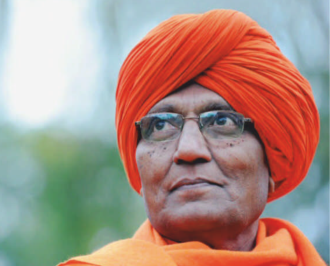Almost all this labour, he discovered in Haryana—which was a hotbed of it—was indentured servitude. The workers were landless Dalits or their children, forced to borrow to pay for medicines or dowries from a local, higher-caste moneylender. The average loan was around 2,000 rupees, or $27, but at interest rates of 40% or more it could seldom be paid back. Payment was made in the form of labour from which workers could not escape, and the debt was passed down the generations. Many of these enslaved workers were therefore children, some as young as four or five.
阿涅維什在哈里亞納發(fā)現(xiàn),幾乎所有的勞動都是契約勞役,而哈里亞納是契約勞役的溫床。這些工人要么是沒有土地的賤民,要么是他們的子女,被迫向當(dāng)?shù)馗叻N姓的放債人借錢購買藥品或嫁妝。平均貸款約為2000盧比(合27美元),但在利率高達(dá)40%或以上的情況下,貸款幾乎無法償還。貸款以勞動者無法逃脫的勞動形式支付,債務(wù)代代相傳。因此,許多被奴役的工人都是兒童,有些才四、五歲。
By his own estimates, of perhaps 60m bonded workers, 15m were under 14. Once he was on the watch for them he saw them everywhere: bending all day over tobacco baskets to hand-roll beedis, gathering broken cups outside teashops, picking rags. Their small, soft hands were thought ideal for delicate jobs such as knotting threads, dozens to each square centimetre, in carpet-making. But their bodies were deformed by it, and their lives shortened. There were laws against this, as against bonded labour in general. They were rarely enforced, because servitude was accepted as part of the natural order. He did not accept it. In 1981 he set up the Bonded Labour Liberation Front, raising money to buy the freedom of as many workers as possible and to teach the rest what their rights were.
根據(jù)他自己的估計(jì),在大約6000萬勞役工人中,有1500萬不滿14歲。一旦阿涅維什留心觀察,他到處都能看到它們:整天在煙草籃前彎著腰用手卷煙,在茶館外收集破碎的杯子,撿破布。她們小巧柔軟的手被認(rèn)為是做精細(xì)工作的理想人選,比如編織地毯時(shí),比如每平方厘米打幾十根線。但他們的身體卻因此變了形,壽命也縮短了。這是有法律禁止的,就像一般禁止抵債性勞動一樣。這些法律很少被強(qiáng)制執(zhí)行,因?yàn)榕郾唤邮転樽匀恢刃虻囊徊糠帧0⒛S什沒有接受它。1981年,他成立了抵債勞動解放陣線,籌集資金以購買盡可能多的工人的自由,并教育其他人這些工人的權(quán)利是什么。

Almost recklessly, because his bright robes advertised him everywhere, he and his helpers slipped into the wretched shanty-villages to encourage the labourers to organise. Eventually unions were created for stone-cutters, builders and brick-kiln workers; meanwhile, he battled employers in the courts. Those workers he managed to rescue—around 178,000 in all, roughly 26,000 of them children— were trained for new jobs or sent, for the first time, to school. Much of this, especially the shouts of “Revolution!” after some of his worker meetings, seemed more political than priestly.
他幾乎是不顧一切地去做,因?yàn)樗酋r艷的長袍到處為他打著招牌,他和助手們溜進(jìn)了貧困的棚戶區(qū),鼓勵工人們組織起來。最終,切石工、建筑工和磚窯工人成立了工會;與此同時(shí),他在法庭上與雇主較量。他解救的工人總共約17.8萬人,其中約2.6萬名是兒童,他們要么接受新工作培訓(xùn),要么第一次開始上學(xué)。尤其是在他開過幾次工人會議后,人們喊出的“革命!革命!”。這句話似乎更像是政治性的,而不是牧師式的。
譯文由可可原創(chuàng),僅供學(xué)習(xí)交流使用,未經(jīng)許可請勿轉(zhuǎn)載。












